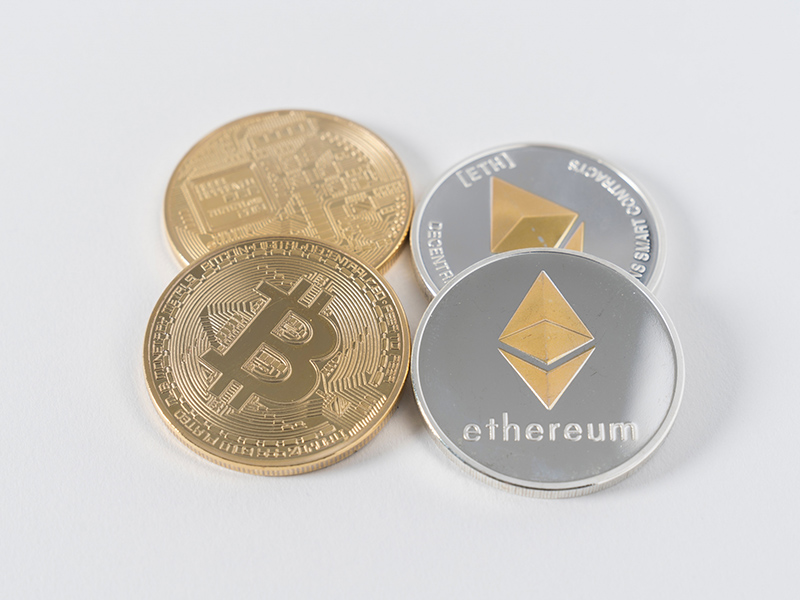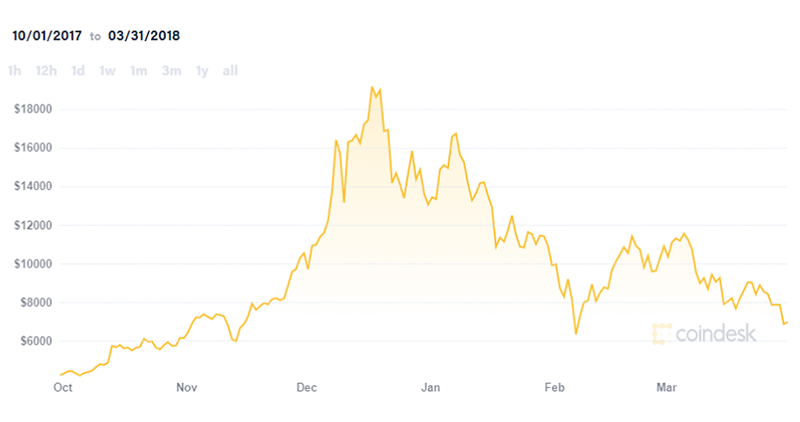“Paper money is going away,” contends Elon Musk.
Is it, though?
Well, as far-fetched as it may seem right now, cryptocurrency does seem to be making its way to becoming a universally accepted mode of payment.
Meanwhile, digital currencies continue to double as an asset class that can produce eye-popping returns (or losses). Investors and traders are loading up their guns ready to fire away at the first chance they get. More power to them, I say!
There are, however, certain facets of cryptocurrencies that an investor must stay in-the-know of to eliminate surprises.
4 Things investors should know before investing in crypto
1. Bitcoin is not the only cryptocurrency
This is the most common myth among people who have recently started to learn about cryptocurrency. Bitcoin holds the throne of being the most successful cryptocurrency with a mammoth market cap ($1.7 trillion as of this writing), but there are other interesting options to put money in.
Some of the most popular altcoins (alternative cryptocurrencies) today include Ethereum, Ripple, and Chainlink, among several others.
Chainlink, in particular, looks interesting. Its fundamental strength is sourced in its pursuit to create the world’s first blockchain oracle network. Oracles are contributors to some of the most exciting things happening in the crypto-verse, like DEXs (decentralized exchanges). Long-term investors who buy Chainlink stand to gain decent returns from this fundamentally strong crypto.
While more altcoins are emerging each day, several other noteworthy developments are happening on this front.
Stablecoins have been gaining considerable traction of late. This makes sense because humans, by nature, derive comfort from reduced uncertainty. Since stablecoins are pegged to a fiat currency, they’re far less volatile than other types of coins.
Some central banks across the globe are contemplating creating their own digital currencies, too. The Bank of England led the pack of banks that envisioned a Central Bank Digital Currency (CBDC). People’s Bank of China has been working on its CBDC initiative since 2014 and has already conducted several trials in its major cities like Shenzhen, Hangzhou, and Chengdu.
2. Investors can profit without investing
Investors can have their cake and eat it too.
While most investors default to thinking of the traditional way of investing, i.e. buy low, sell high, there is another method of deriving profit from this asset class.
Cryptocurrency CFDs (Contracts for Difference) enable crypto investors to profit off of speculation without investing heaps of cash. CFDs function the same way as Derivative contracts on equities and FOREX.
Essentially, an investor will “bet” on the expectation of a rise or fall in the price of a cryptocurrency. On the other end of this contract is your broker.
So, should investors choose to own cryptocurrencies or opt for cryptocurrency CFDs?
This answer will vary from investor to investor. The following advantages and disadvantages of cryptocurrency CFDs are a good starting point to arrive at a decision.
Advantages
Leveraged trading
Also referred to as margin trading, it allows traders to earn big with a rather small investment. Margin trading, again, works the same way as it does for other financial instruments like equities.
For example, let’s assume that an investor has €1,000 to invest and speculates that Bitcoin’s price will rise. The investor puts in €1,000 and the price appreciates by 30%, earning the investor a sweet €300 profit.
30% is absolutely decent, but a CFD position could have thrown leverage in the mix and potentially gave the investor a far higher return. Let’s simulate the example under the assumption that the investor had opened a CFD position.
The investor puts in his €1,000 and the broker puts in €4,000 (assuming the maximum leverage as 1:5). The investor now has a €5,000 long position on Bitcoin. The price appreciates 30%, and the investor receives €6,500.
Of these, €4,000 belong to the broker and will need to be repaid along with the broker’s share in the investor’s profits, i.e. €300. This leaves the investor with €2,200. That’s a massive 220% return.
Although, this trade could have just as easily massacred your wealth had Bitcoin’s price depreciated 30%.
CFDs offer liquidity
If an investor has some altcoins accumulated in a wallet that the investor wants to liquidate, there’s quite a process involved. Altcoins don’t have a direct cash-out system, so liquidation will involve conversion to Bitcoin and a subsequent ATM withdrawal or withdrawal through an exchange.
On the contrary, CFDs are fairly easy to liquidate and do not involve any conversion. All an investor needs to do is call the broker and request a withdrawal.
Another potential concern that CFDs eliminate is the daily cap on cryptocurrency withdrawals. If investors max out their withdrawals for the day and a bearish sentiment takes over the market in the meantime, investors stand to lose a significant amount.
Disadvantages
Expensive
Leveraged trading is a short-term phenomenon. Traders end up closing their positions within a few days. If they don’t, the CFD platform will automatically close it at the predetermined deadline, even if it causes the investor to lose a ton of money.
The deadline is extendable for a fee, but they are hefty (≈1% of the position).
Investors who want to enter a long-term position are better off buying cryptocurrency from an exchange and closing the position when they’re in the money.
Limited options
CFD providers limit themselves to offering only a small number of crypto options. Most CFDs investors will generally come across are for coins such as BTC, XRP, ETH, and BCH.
While these coins have historically outshined others, a lot of action happening today is with coins that are priced below a dollar. This means an investor’s margin for profits will still be pretty low.
3. History, in this case, may not repeat itself
Here is the history, followed by reasons as to why it may not repeat itself:
The chart shows the infamous 2017 crypto boom, and how the entire story unfolded over the short time span of two quarters (Q4, 2017, and Q1, 2018). The short-lived surge peaked at the end of December 2017, after which the prices started to plummet and less than halved by the end of March 2018.
Investors investing in a cryptocurrency expecting to ride a second similar wave may be headed for disappointment. Experts were already expecting the prices to crash before they peaked in December 2017, and some researchers suggested in a 66-page paper that this spike could have been potentially caused by planned market manipulation.
This should not deter investors from considering cryptocurrencies as a lucrative investment opportunity, though. It just means that investors must learn “Investment 101” before putting their money in.
Crypto investors need thick skin. There most certainly will be terrifying price drops in cryptocurrencies. Prudent investors will approach these drops rationally and not let their anxiety get the best of them.
4. Ensure orderly security arrangements
This is the final step before investors venture into their thrilling crypto investment journey.
Investors will want to tie a couple of loose ends in terms of security.
A dedicated email is the first, non-negotiable requisite. Using their regular email exposes investors to the possibility of a data breach. To make things airtight, it is highly recommended that investors add two-factor authentication to the dedicated email account and all trading-related services they plan to use. It is good practice to use dedicated two-factor apps like Google Authenticator instead of text messages.
During sign-up, investors should insert randomized login credentials that lack any personally identifiable information.
Investors are better off steering clear of exchanges that offer low-cost trading services or are located in countries that lack adequate investor security. They should also do a background check on the business entity that owns the exchange to ensure credibility.
When investors have set up an account with an exchange, they’ll be assigned a “hot” (internet-connected) wallet. While hot wallets offer convenience, especially for beginners, they’re vulnerable to the risk of being hacked. “Cold” (not internet-connected) wallets are more secure but may require a little more manual work.
Ideally, investors should find a sweet spot between using these wallets. For example, investors could store the lion’s share of their crypto on a cold wallet, and store the remainder on a hot wallet where they can easily access it whenever they need it for a transaction.
Conclusion
Blockchain is in its infancy, but that’s changing faster than ever before. While the primary purpose of a cryptocurrency is to offer anonymity, security, and a reliable global financial network, it also offers a lucrative opportunity for investors.
Investing in cryptocurrency differs from traditional investing in several aspects. Investors must thoroughly understand cryptocurrencies as an asset class and how it differs from other asset classes beforehand because mistakes come with a huge cost.
Investors must ensure they’re not compromising on their family’s well-being or risking their future by investing all of their money in crypto. Investment should only be made to the extent permissible by an investor’s risk appetite. Wealth creation takes patience—tread with caution while riding the crypto wave.
Disclaimer: This article contains sponsored marketing content. It is intended for promotional purposes and should not be considered as an endorsement or recommendation by our website. Readers are encouraged to conduct their own research and exercise their own judgment before making any decisions based on the information provided in this article.





























![“Does Everyone Hear Me OK?”: How to Lead Virtual Teams Effectively iStock-1438575049 (1) [Converted]](https://www.europeanbusinessreview.com/wp-content/uploads/2024/11/iStock-1438575049-1-Converted-100x70.jpg)




